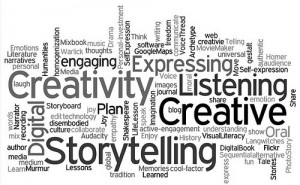The Power of Storytelling
Felber PR & Marketing, “Adventures in Marketing” –
Storytelling is a powerful tool that all manufacturing companies should adopt in order to engage its audience. Rather than presenting news and facts, a leader or a representative of the company can “present important organizational information in a way that resonates with people, engages their imagination and stimulates commitment and enthusiasm.” Do you have a story to share? Check out this story’s seven rules for telling good stories.
 Miguel Ferrer – Manufacturing Executive member
Miguel Ferrer – Manufacturing Executive member
Storytelling is the art of creating or delivering a narrative—a description of events that people can relate to, learn from, and remember. Stories are powerful tools because they do more than merely convey information: They are a meaningful and enjoyable way to share ideas, lessons, and values. Good stories are persuasive, appealing, and a good way to shape an organization’s culture. Leaders throughout history have relied on storytelling as an effective means of motivating others, especially during times of uncertainty and rapid change. Stories are far more persuasive and effective than abstract concepts.
Rather than presenting sterile, mundane data, a manager or leader can present important organizational information in a way that resonates with people, that engages their imagination and stimulates commitment and enthusiasm. This is because emotional content is inherent in stories, which adds another dimension to the communication process. Stories capture our imaginations. They evoke sights, sounds, smells, and other sensory experiences that the presentation of abstract concepts or data simply cannot. Storytelling is one of the ways to handle the principal—and most difficult—challenges of leadership: sparking action, getting people to work together, and leading people into the future.
The right story at the right time can help an organization get ready for a new idea and course of action. Storytelling doesn’t replace analytical thinking; it supplements it by enabling us to imagine new perspectives and new worlds.
But just how does one tell a good story? Here is a list of some basic rules that any storyteller can follow to achieve maximum effect with his or her story:
1. The story should be about a real person. Using a real person makes the story more credible to your audience.
2. The story should have a strong sense of time and place. This puts the story into a context that people can relate to and will remember: “Two years ago when I was manager of Snuffy’s Restaurant in Toledo, Ohio. . . .”
3. The story should be focused, simple, and clear. Too much detail and rambling will cause your audience to lose interest.
4. The story should be told in colorful and animated language. This engages the audience’s imagination and captures interest.
5. A good story uses emotions carefully and powerfully. Empathy, surprise, meaningful insight, compassion and even tactful and controlled outrage will engage your audience’s attention. It is emotional content that separates raw, boring data from a good illustration of the story’s point.
6. Along with emotions, you can also use gestures to add emphasis and a touch of theatre. After all, storytelling is a performance art.
7. Be yourself. Be authentic and sincere. You want people to believe you.
Storytelling, when done right, is truly one of the most powerful and effective tools for engaging and inspiring people to get behind a vision or mission. Stories help create the culture that becomes the heart and soul of the organization.
—
‘The Power of Storytelling‘ was originally posted in the Manufacturing Executive community page.

Leave a Reply
Want to join the discussion?Feel free to contribute!